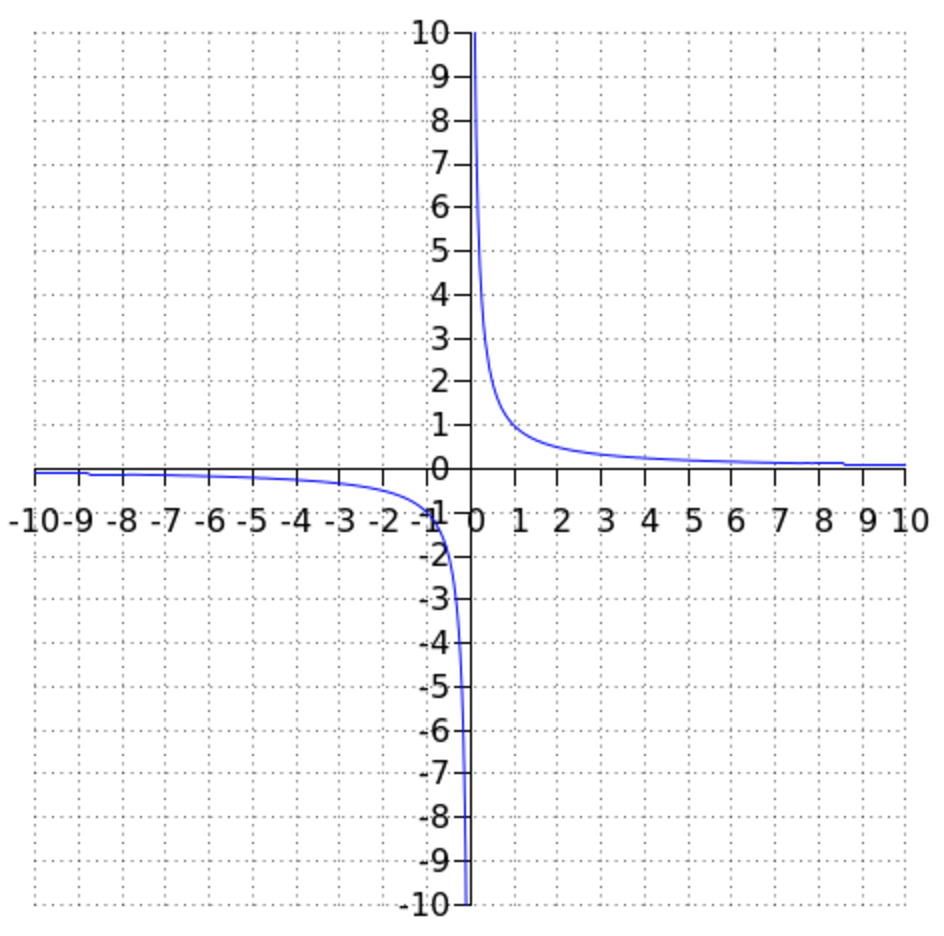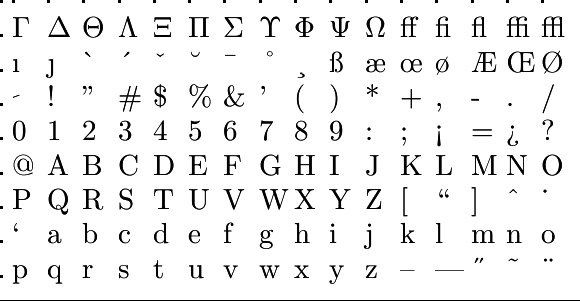Basic algebra skills: Negative exponents
 Negative exponents
Negative exponents
So far we have seen both linear functions and equations, and quadratic functions and equations. Now, we will look at functions and equations with negative exponents. We start with a calculation rule.
Calculation rule for negative exponents
For unknown #x# and a number #n#, we have
\[x^{-n}=\frac{1}{x^n}\]
Unlike linear and quadratic functions, functions with a negative exponent are not defined everywhere. This means that not all #x# values have a corresponding #f(x)# value. To illustrate, we will look at the function #\frac{1}{x}#. The graph of the #y=\frac{1}{x}# function is shown below.

The function #\frac{1}{x}# is defined for all real numbers #x\ne0#. In #x=0#, the denominator is equal to #0#, and the fraction in the function statement is therefore not defined. Near #x=0#, the function values are very far from #0#:
Hyperbola and asymptote
To the right of #x=0#, the function #\frac{1}{x}# goes to infinity (#\infty#); that is, you can get arbitrarily large numbers as function values by choosing #x# to be positive and close enough to #0#. Likewise, the function to the left of #x=0# goes to negative infinity (#-\infty#). We can conclude that the graph of #\frac{1}{x}# comes arbitrarily close to the #y#-axis. In other words: the #y#-axis is a vertical asymptote of the graph (we also say: of the function).
The #x#-axis is a horizontal asymptote of the graph: as we let #x# approach infinity, #\dfrac{1}{x}# gets smaller and smaller and the function value gets closer to #0#. We find points of the graph that are arbitrarily close to the #x#-axis, but not on it. The same applies if we let #x# go to negative infinity; even then, #\dfrac{1}{x}# comes closer and closer to #0# without being equal to it.
The graph of #\frac{1}{x}# is sometimes called a hyperbola. A characteristic of the hyperbola is the pair of lines that the graph gets closer and closer to without intersecting them. These lines are called asymptotes.
- #\frac{3}{x}=3\cdot x^{-1}#
- #\frac{1}{9 \cdot x^2}=\frac{1}{9} \cdot x^{-2}#
The following statements are not true:
- #\frac{1}{9 \cdot x}\ne 9 \cdot x^{-1}#, because #\frac{1}{9 \cdot x}=\frac{1}{9} \cdot x^{-1}#
- #\frac{9}{x^2} \ne \frac{1}{9}\cdot x^{-2}#, because #\frac{9}{x^2}=9\cdot x^{-2}#

Or visit omptest.org if jou are taking an OMPT exam.



